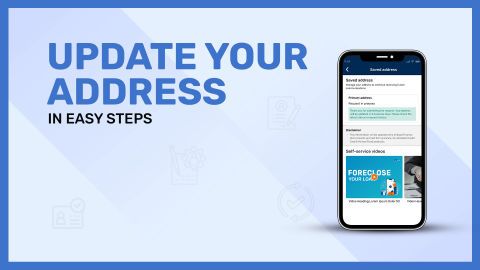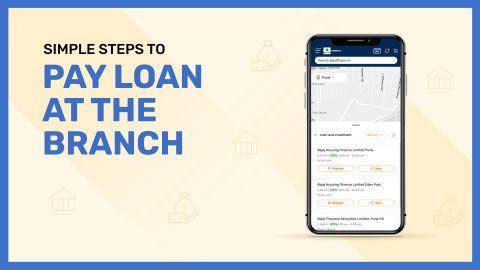The Reserve Bank of India (RBI) mandates that all lenders provide these documents to borrowers to foster a fair lending environment. By thoroughly reading the MITC and KFS, borrowers gain insight into their financial obligations and rights, enabling them to make informed decisions that suit their financial needs and repayment capacity. Whether you are applying for a home loan, personal loan, or business loan, understanding these documents is the first step towards managing your loan responsibly.
This article explains why reading these documents is crucial, the key differences between MITC and KFS, critical sections to watch out for, and how Bajaj Finserv facilitates easy access to these documents digitally.
Why reading MITC & KFS is crucial for borrowers
Borrowing money is a significant financial decision, and reading the MITC and KFS documents ensures you fully understand your loan’s terms. These documents highlight essential aspects such as the interest rate, loan tenure, repayment schedule, fees, and penalties. Ignorance of these details can lead to unexpected expenses or difficulties in repayment.The RBI has made it compulsory for lenders to share these documents so borrowers are well informed before signing any agreements. The MITC provides a detailed explanation of all loan terms, while the KFS offers a snapshot of the most critical features for quick understanding. For instance, the MITC includes information about processing fees, prepayment charges, and late payment penalties that can affect your loan cost significantly.
By reading the MITC and KFS, you can compare different loan products more effectively, choosing the one that suits your financial profile best. You will also be aware of your responsibilities and rights, such as how to raise grievances if you face issues. This knowledge helps avoid surprises like hidden charges or misunderstandings about loan tenure or EMIs.
Furthermore, being well-informed helps improve your credit discipline and financial planning, reducing the risk of defaults. Overall, understanding these documents is fundamental to responsible borrowing and ensures your loan journey with lenders like Bajaj Finserv is smooth and transparent.\
What is MITC & KFS? Key differences explained
| Aspect | MITC (Most Important Terms and Conditions) | KFS (Key Fact Statement) |
| Purpose | Provides detailed and comprehensive loan terms and conditions | Offers a brief summary of key loan features for quick review |
| Content | Includes interest rates, repayment schedule, fees, penalties, and other loan terms | Focuses on loan amount, interest rate, tenure, EMI, and total cost |
| Format | Lengthy and detailed document | Concise, usually a one-page document |
| Timing of provision | Provided at the time of loan sanction or before agreement signing | Given before the loan agreement is signed |
| Regulatory mandate | Mandated by RBI for all loan products to ensure transparency | Mandated by RBI to standardise loan disclosures |
| Applicability | All types of loans including home, personal, business, etc. | Mainly retail and MSME loans |
| Updates | Updated when there are significant changes in loan terms | Valid for a fixed period, must be current before signing |
| Accessibility | Available through lender’s website or upon request | Provided physically or digitally during loan processing |
| Legal binding | Part of the loan agreement | Reference document but not legally binding |
| Importance for borrowers | Essential to understand detailed loan obligations | Useful for quick comparison and clarity on major loan terms |
This table shows that while both documents aim to keep borrowers informed, MITC offers a comprehensive guide to all loan conditions, whereas KFS is designed to give borrowers a quick snapshot of critical details, helping them make swift comparisons and informed decisions.
10 critical sections to check in your MITC
When you receive your MITC document, these are the top 10 sections you must thoroughly check to avoid surprises during your loan tenure:- Interest rate details Understand whether the interest rate is fixed or floating, how it is calculated, and the current applicable rate. This impacts your EMI and total repayment.
- Processing fees Check the fees charged for processing your loan application. Some lenders may deduct this upfront or add it to the loan amount.
- Prepayment or part prepayment charges Know if you can pay off your loan early or partially without penalties, and if charges apply. This helps plan prepayments smartly, such as through loan part prepayment.
- Late payment penalties Review the penalties charged if you miss an EMI or delay payment. This is important to avoid escalating costs.
- Repayment schedule and EMI amount Understand your monthly EMI, due dates, and tenure. Any changes here can impact your budgeting.
- Security or collateral requirements Check if your loan requires collateral or any security. Knowing this is crucial for asset management.
- Loan insurance or protection cover See if insurance on the loan is mandatory or optional and what it covers.
- Loan tenure Note the full duration of your loan, as this affects interest costs and commitment length.
- Disbursement conditions Understand when and how the loan amount will be disbursed, which may be in lumps or stages.
- Grievance redressal process Know how to raise complaints or disputes related to your loan. Quick resolution is important.
How to read KFS: a step-by-step guide
| Step | Section in KFS | What to look for |
| 1 | Loan amount | Confirm the total sanctioned loan amount to ensure it meets your needs |
| 2 | Interest rate | Check the interest rate and whether it is fixed or floating |
| 3 | Loan tenure | Note the duration of the loan in months or years |
| 4 | EMI amount | Understand your monthly EMI to budget accordingly |
| 5 | Total repayable amount | Calculate the total amount payable over the entire tenure including interest |
| 6 | Processing fees | Identify any upfront fees or charges |
| 7 | Prepayment terms | Review if early or part prepayment is allowed and associated costs |
| 8 | Late payment charges | Be aware of penalties for delayed EMI payments |
| 9 | Security or collateral | Check if any security or collateral is required |
| 10 | Contact information | Note the lender’s customer care or grievance cell details for queries or complaints |
This stepwise approach helps borrowers quickly understand the core details of their loan and facilitates easier comparison between different lenders and products.
MITC/KFS variations across loan products
| Loan product | MITC variations | KFS variations |
| Home loans | Detailed MITC with extensive info on interest rate fluctuations, tenure options, and prepayment conditions | KFS highlights loan amount, EMI, tenure, and total payable amount |
| Personal loans | MITC includes processing fees, prepayment charges, and late payment penalties | KFS summarises interest rate, EMI, tenure, and fees |
| Credit cards | MITC covers interest-free periods, penalty fees, and repayment options | KFS lists key fees and interest rates briefly |
| Auto loans | MITC explains down payment, interest rate, insurance needs, and collateral details | KFS focuses on EMI, tenure, and interest rates |
| Business loans | MITC details collateral, repayment flexibility, interest compounding | KFS summarises tenure, EMI, and key fees |
These variations reflect the complexity of different loan types. For instance, home loans typically have longer tenures and floating interest rates, requiring detailed MITC. In contrast, personal loans have simpler terms, and the KFS serves as a quick reference. Understanding these differences helps borrowers choose loans aligned with their financial needs.
Digital access to documents: Bajaj Finserv process
- Log in to Bajaj Finserv Service Portal Use your registered mobile number to access the Bajaj Finserv Service Portal. This portal offers a secure gateway to your loan information.
- Select your loan account After logging in, Go to ‘Relations’ choose the specific loan account for which you want to view documents such as MITC and KFS.
- Download MITC and KFS documents Bajaj Finserv provides downloadable PDFs of your loan’s MITC and KFS, enabling easy offline access and review.
- Request physical copies if needed If you prefer, you can request printed copies via the portal, which will be sent to your registered address.
- Use Bajaj Finserv loan payment options The portal also supports convenient repayment methods including Bajaj finance loan payment through debit card.
- Customer support access For any assistance regarding your loan documents or clarifications, the portal connects you with Bajaj Finserv’s customer care team.
Conclusion
Understanding your loan’s Most Important Terms and Conditions (MITC) and Key Fact Statement (KFS) is essential to becoming a responsible borrower in India. These documents provide clarity on your loan’s costs, fees, tenure, and repayment obligations, helping you avoid surprises and make informed decisions. The RBI mandates these documents to ensure transparency and fairness in lending.By carefully reading the MITC and KFS, you can compare loan products effectively and manage your finances better. Different loans have variations in these documents, so awareness of these helps tailor borrowing to your needs. Bajaj Finserv’s digital platform makes accessing these documents easy and secure, giving you control over your loan details.
Always review these documents thoroughly before signing any loan agreement. This practice safeguards your financial health and promotes a smooth borrowing experience. For additional convenience, Bajaj Finserv also offers seamless online repayment options, such as Bajaj finance loan payment through debit card, helping you manage your loan effortlessly.
If you are considering taking a loan, understanding MITC and KFS is your first step toward financial empowerment and confident borrowing.




